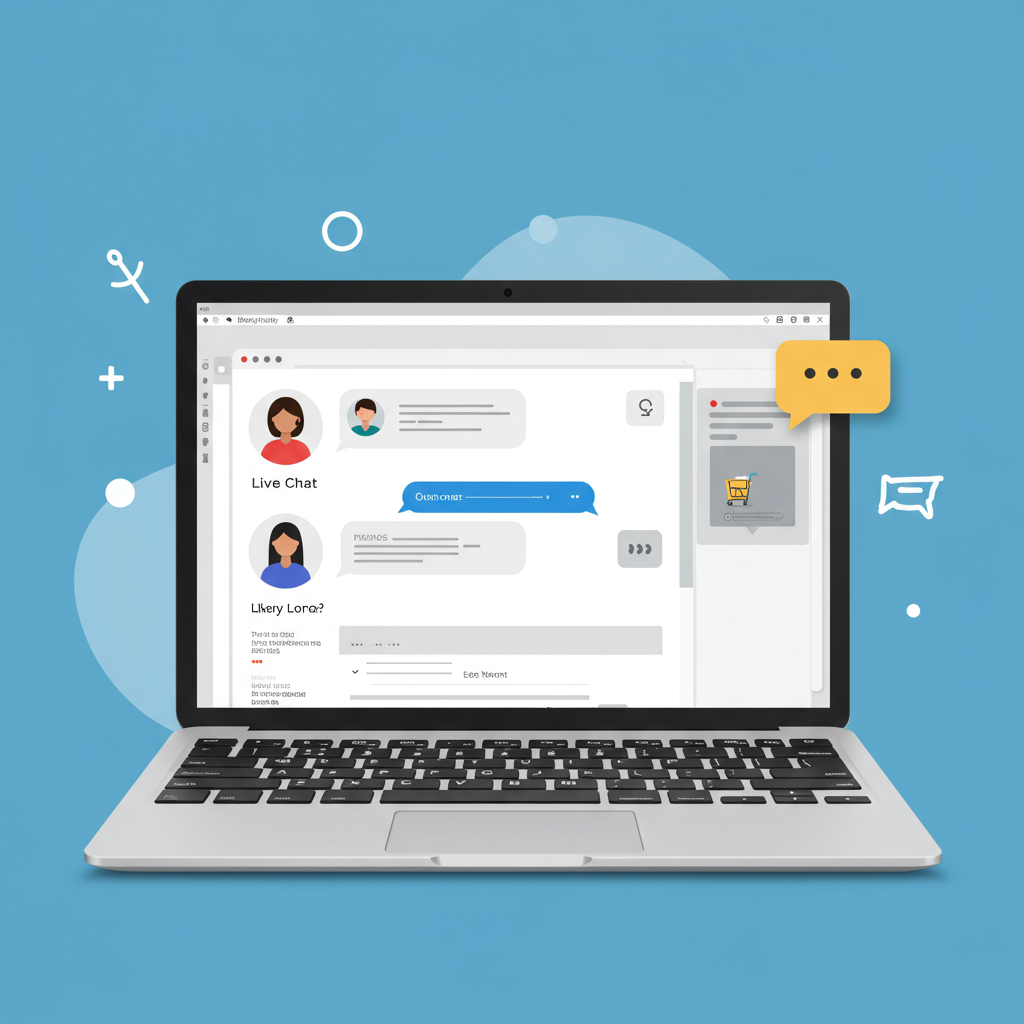Discover how real-time customer engagement can transform your e-commerce business and enhance customer satisfaction.
As a Shopify merchant, I’m constantly looking for ways to improve my store’s performance and, most importantly, my customers’ experience.
One of the most impactful changes I’ve made to my own e-commerce business is implementing live chat support.
It’s a game-changer, allowing me to connect with visitors in real-time, answer their questions instantly, and guide them through their purchase journey.
In today’s fast-paced digital world, customers expect immediate gratification. They don’t want to wait hours for an email response or navigate complex phone menus.
Live chat bridges that gap, offering an instant communication channel that feels personal and efficient.
So, why should you consider adding live chat to your Shopify store? The benefits are numerous and directly impact your bottom line.
Firstly, it significantly increases conversion rates. When a customer has a question about a product, shipping, or returns, an immediate answer can be the difference between a sale and an abandoned cart.
Secondly, it boosts customer satisfaction and loyalty. Providing quick, helpful support makes customers feel valued and heard, encouraging repeat business.
Thirdly, live chat can reduce cart abandonment. Often, a small doubt or a missing piece of information is enough for a customer to leave their cart. A quick chat can resolve these issues on the spot.
Fourthly, it provides invaluable insights into customer pain points. Chat transcripts offer a direct window into what your customers are struggling with or what information they seek most often.
Now that you’re convinced of its importance, let’s dive into how you can set up live chat support for your own Shopify store.
The first step is choosing the right live chat application. The Shopify App Store is brimming with options, each offering different features and pricing tiers.
When evaluating apps, I look for several key features. Seamless integration with Shopify is paramount; you want it to work effortlessly with your store’s theme and customer data.
Customization options are also crucial. You’ll want to match the chat widget’s appearance to your brand’s aesthetic, including colors, fonts, and placement.
Consider automation capabilities, such as chatbots, which can handle frequently asked questions outside of business hours or pre-qualify leads before connecting them to a human agent.
Analytics and reporting features are vital for tracking performance, understanding chat volume, and identifying areas for improvement.
Don’t forget mobile compatibility. A significant portion of your customers will likely browse on their phones, so the chat widget must function perfectly on all devices.
Popular choices include Tidio, Gorgias, LiveChat, and even Shopify’s own built-in solution, Shopify Inbox. Each has its strengths, so research what best fits your needs and budget.
Once you’ve selected an app, the setup process typically involves installing it from the Shopify App Store. This usually takes just a few clicks.
After installation, you’ll configure the basic settings. This includes setting up your welcome message, which is the first thing customers see when they open the chat window.
You’ll also define your operating hours. What happens when you’re offline? Most apps allow you to display an offline message and capture the customer’s email address so you can follow up later.
Next, you’ll need to set up your agents. This involves inviting team members who will be responsible for answering chats and assigning them appropriate permissions.
Before going live, always perform thorough testing. Send a few test messages yourself to ensure the widget appears correctly, messages are received, and responses are sent without issues.
To truly maximize the effectiveness of your live chat, consider implementing advanced features. Proactive chat, for instance, allows you to automatically initiate a chat with visitors based on their behavior, like spending a certain amount of time on a product page.
Canned responses are a lifesaver for common questions. Pre-written answers save your agents time and ensure consistent, accurate information is provided.
Pre-chat forms can collect essential customer information, such as their name and email, before the chat even begins, helping your agents provide more personalized support.
Integrating your live chat with other tools, like your CRM or email marketing platform, can streamline workflows and provide a holistic view of your customer interactions.
Training your agents is paramount. They should be knowledgeable about your products, policies, and how to use the chat software efficiently and empathetically.
Regularly monitor your live chat performance using the analytics provided by your chosen app. Look at metrics like response time, resolution rate, and customer satisfaction scores.
What do you think about this article so far? Is it providing the insights you need to confidently set up live chat for your store?
Let’s talk about Shopify Inbox specifically. It’s a fantastic, free option built directly into Shopify, designed to help you manage customer conversations from various channels, including live chat.
While it might not have all the advanced features of some paid apps, it’s an excellent starting point for new merchants or those on a tight budget.
It integrates seamlessly with your Shopify admin, allowing you to view customer order history directly within the chat interface, which is incredibly helpful.
Remember to optimize your chat for mobile users. Ensure the widget doesn’t obscure content and is easy to tap and type on smaller screens.
Also, be mindful of privacy regulations like GDPR. Ensure your chosen app is compliant and that you have a clear privacy policy regarding data collected via chat.
In conclusion, setting up live chat support on your Shopify store isn’t just an add-on; it’s a fundamental component of modern e-commerce success.
It empowers you to connect with your customers in a meaningful way, resolve their issues swiftly, and ultimately drive more sales and foster lasting relationships.
I’ve seen firsthand the positive impact it can have on customer satisfaction and conversion rates.
Don’t hesitate to explore the options available and implement this powerful tool for your business. Your customers, and your bottom line, will thank you for it.






